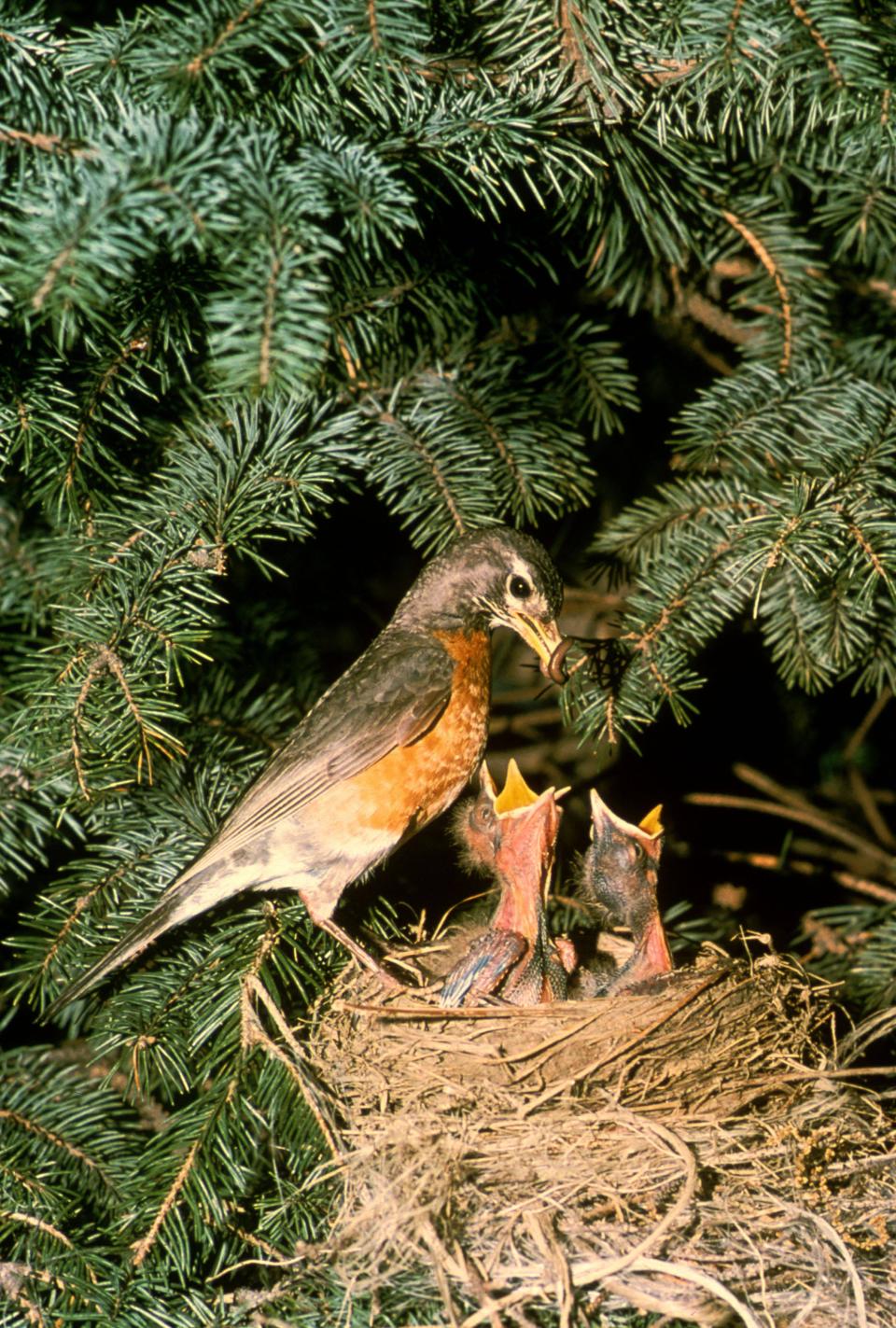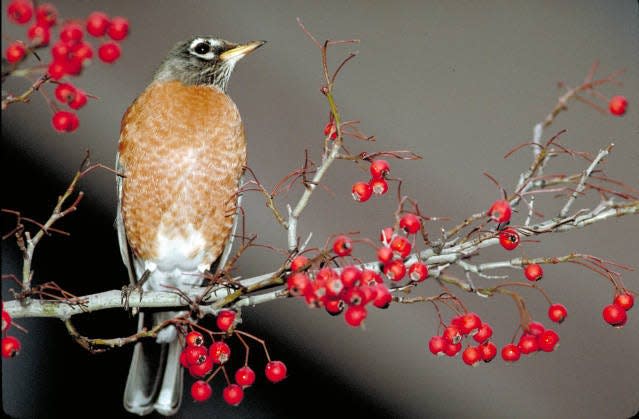Think you know all about robins? You might not know as much as you think you do.
He rocks in the tree tops all day long
Hoppin' and a-boppin' and a-singing his song
All the little birds on Jaybird Street
Love to hear the robin go tweet, tweet, tweet. . .
“Rockin’ Robin” by Bobby Day

Recently my column has focused on large charismatic wildlife such as bald eagles, wolves, condors, etc. But the reality is these are not the type of wildlife we encounter daily.
So, in my ever present desire to help us “Know Our Wildlife Neighbors,” let me introduce the wildly common but still extraordinary American robin (Turdus migratorius).
This is the perfect time of year to appreciate robins as they are the stereotypical early bird. They are one of the first birds to return to the area after winter and they reliably awake at dawn singing, when they don’t have a worm in their beak.
Robins are found in every American state except Hawaii (and are the state birds in three of them) and they are probably the most recognizable birds in North America.
And yet for all their visibility, we barely know the hidden life of robins — and some of the things we think we know about robins are wrong.
For example, although robins are often described as the first sign of spring, many robins never leave the area. They overwinter in treetops and are less visible outside our kitchen windows. But they will pop up suddenly in spring, having been playing hide and seek for the winter.
The connection between robins and worms might also be exaggerated. Although the hopping robins tilting their heads seem to be hearing worms, they actually find them by sight — perhaps "eagle-eyed" should more accurately be “robin-eyed.”
Although robins definitely have worms as their favorite breakfast food, they also love insects and fruits later in the day and season. In fall and winter their diet might be exclusively fruits. In fact, robins love fruits so much they can occasionally become drunk after gorging on fermenting berries.

The solitary robin hopping on your lawn can also become quite gregarious in the colder months, gathering in flocks of hundreds in fall and winter.
Yet in other ways the robin lives up to its reputation.
It is indeed an early bird, being an early riser to serenade its human neighbors and one of the earliest birds to lay its eggs in spring. It is the most populous bird in North America, with about 370 million robins cohabitating with us.
Yet this amazing, ubiquitous bird is not without enemies. Snakes, squirrels, foxes and cats all prey on robins.
But perhaps the robins most dangerous foe in the 1950s and 1960s was humans.
Robins' prolonged hopping on the ground made them particularly susceptible to pesticides like DDT. Maryland native Rachel Carson’s pioneering indictment of DDT, "Silent Spring" (1962), imagined a dystopic future where robins were inadvertently poisoned, and their songs silenced.
Luckily for us and the robins, DDT was banned in 1972 and robins are cacophonous this time of year. Their early song reminds us that our backyards are their homes, and we should strive to be good neighbors and good stewards of our shared abodes.
Mark Madison lives in Hagerstown with at least half a dozen robins in his backyard.
More Mark: Species in/on Jeopardy! Could you recognize the clues?
This article originally appeared on The Herald-Mail: The common robin is an uncommonly extraordinary bird

